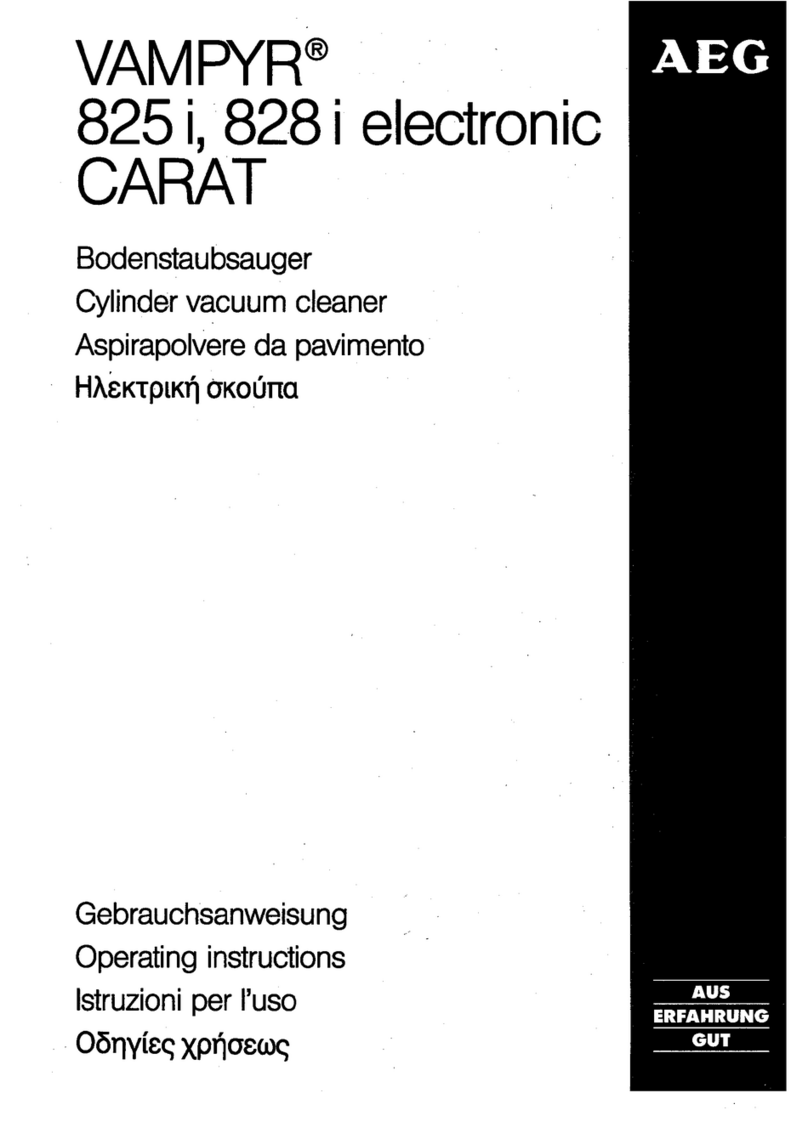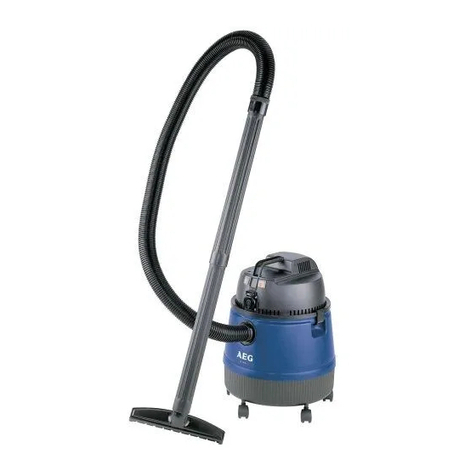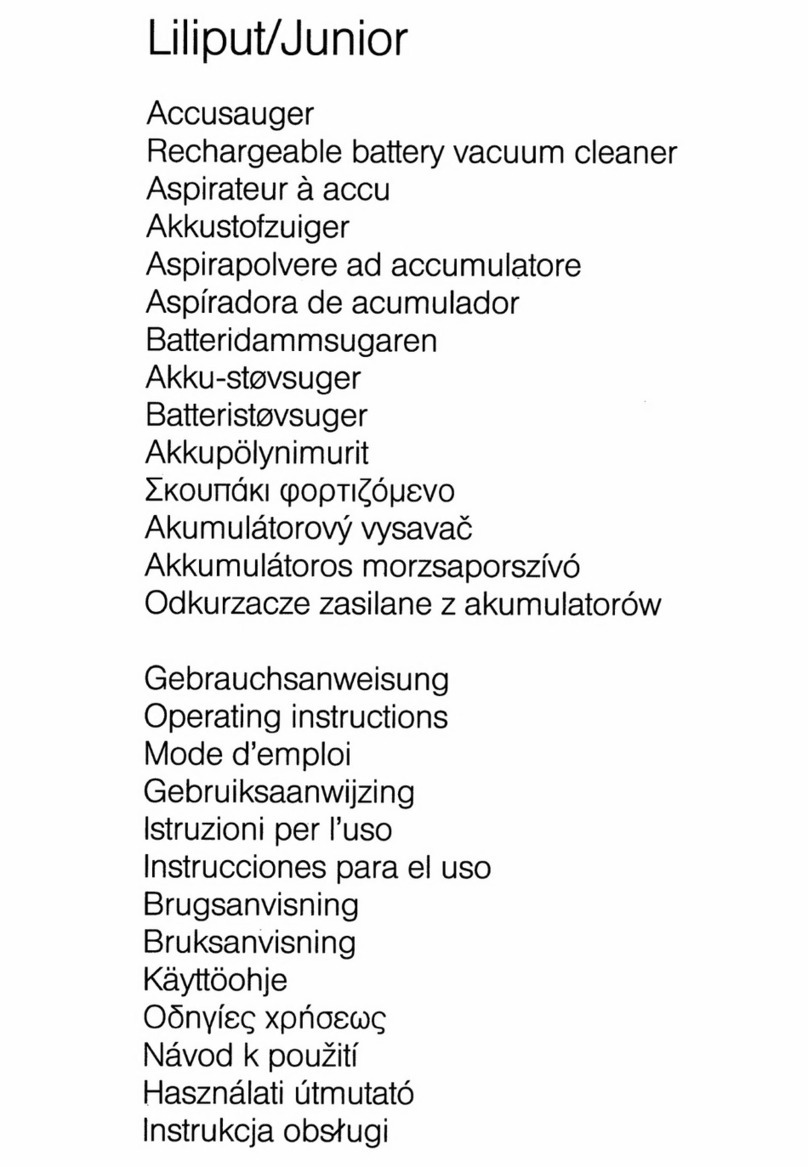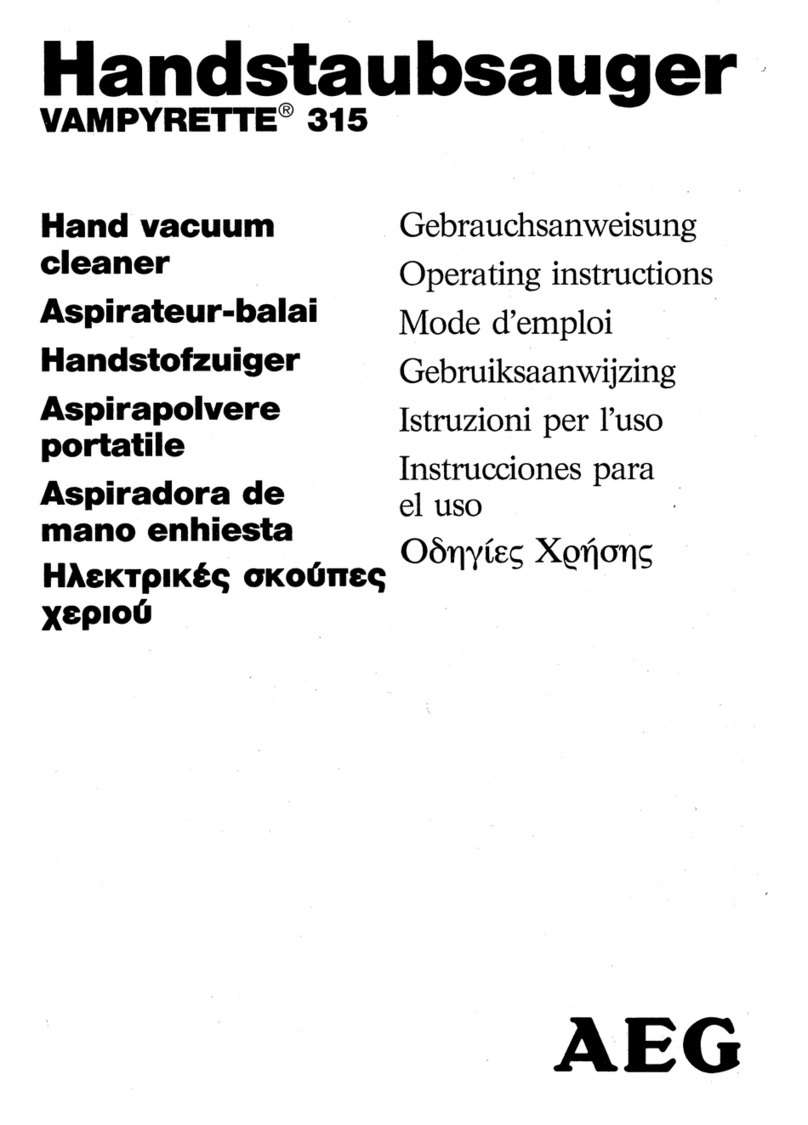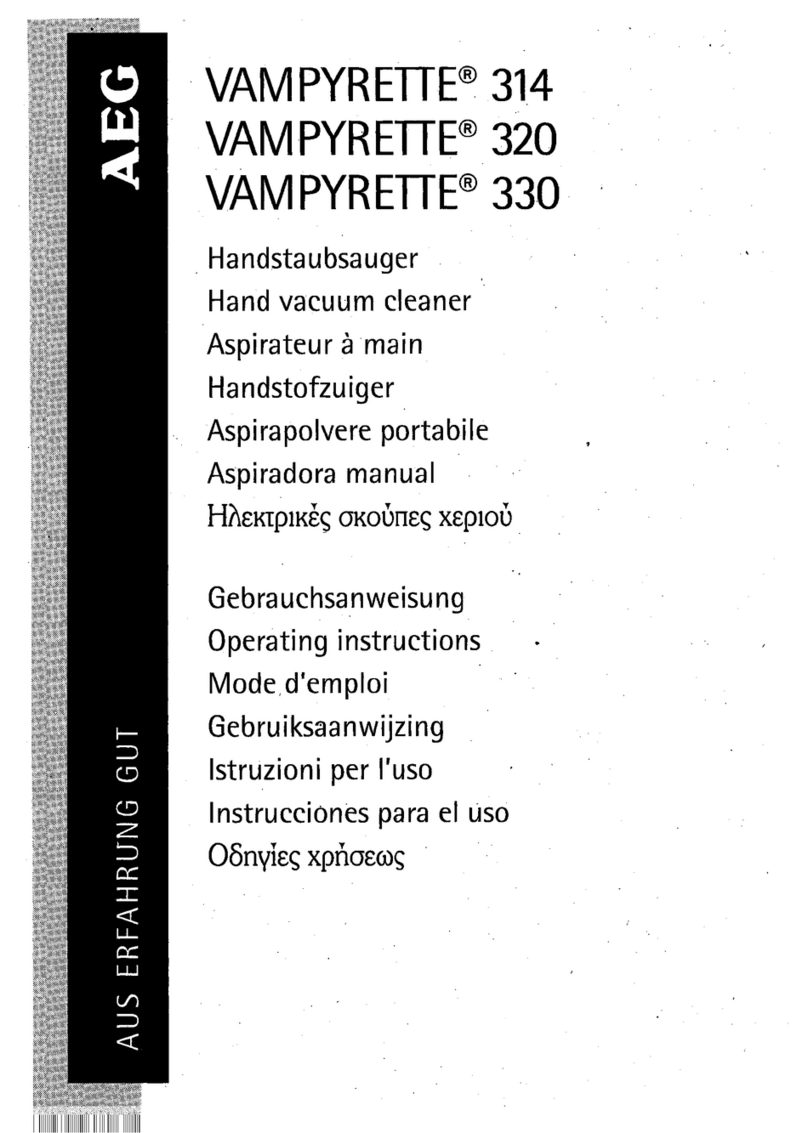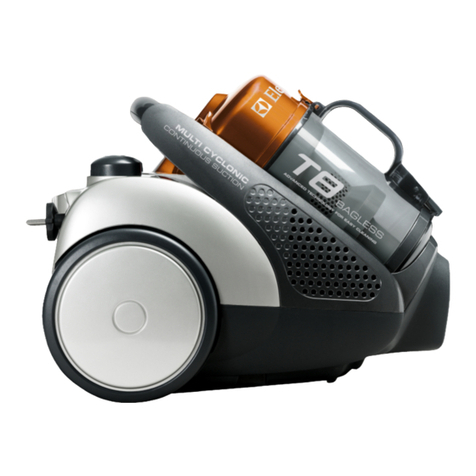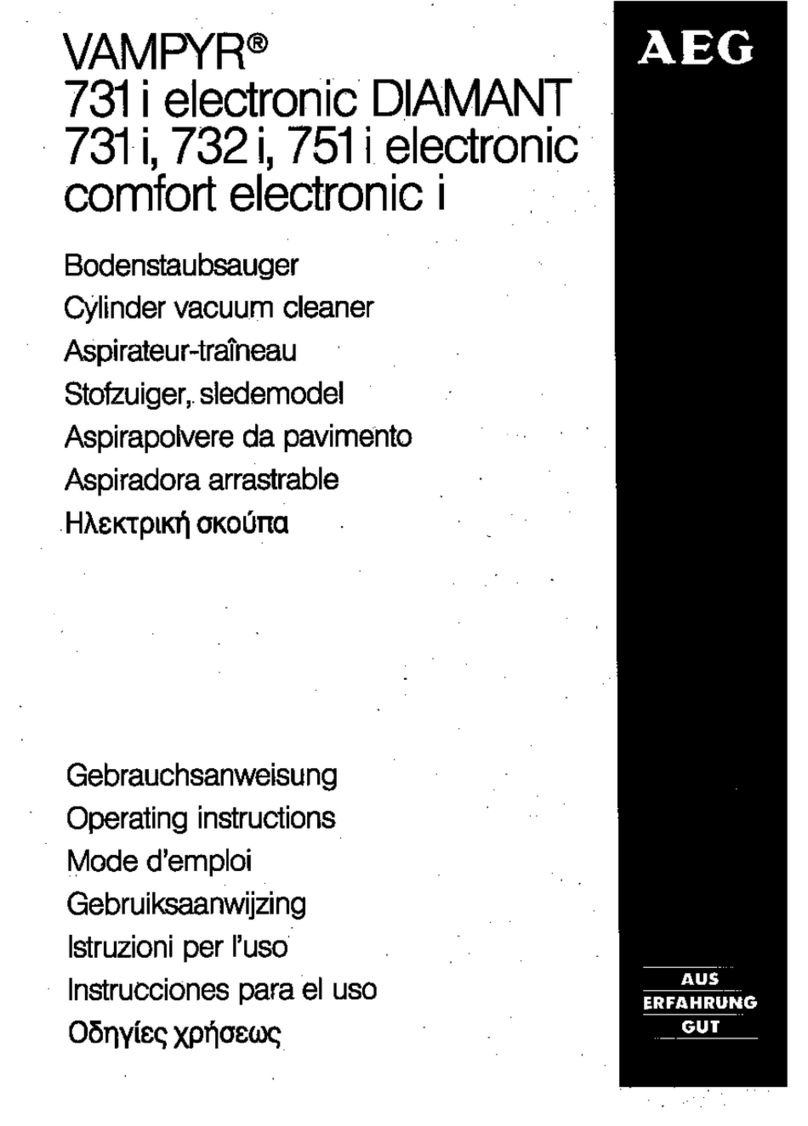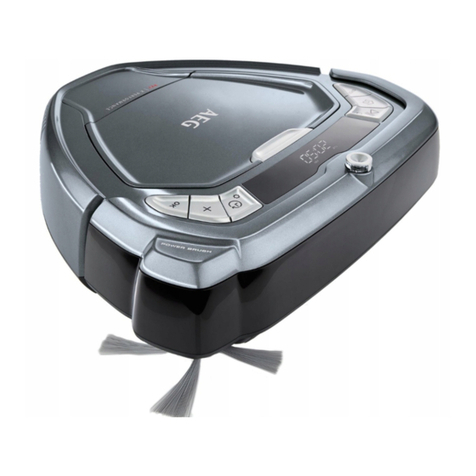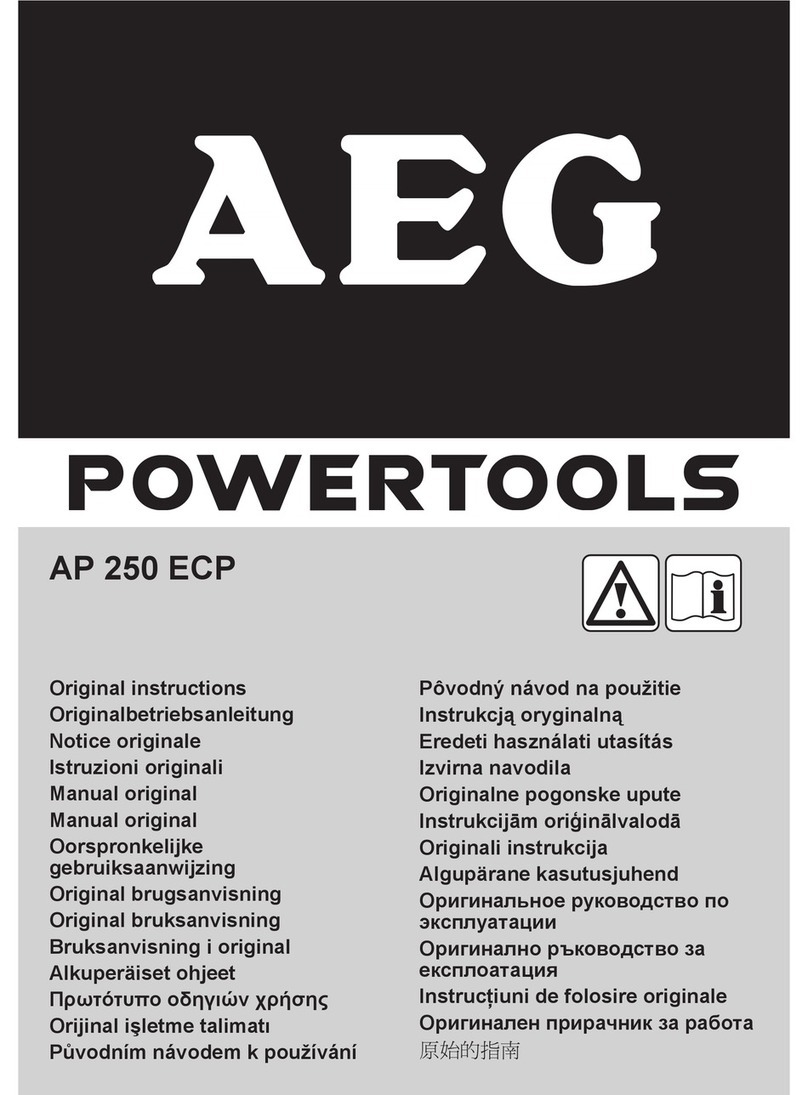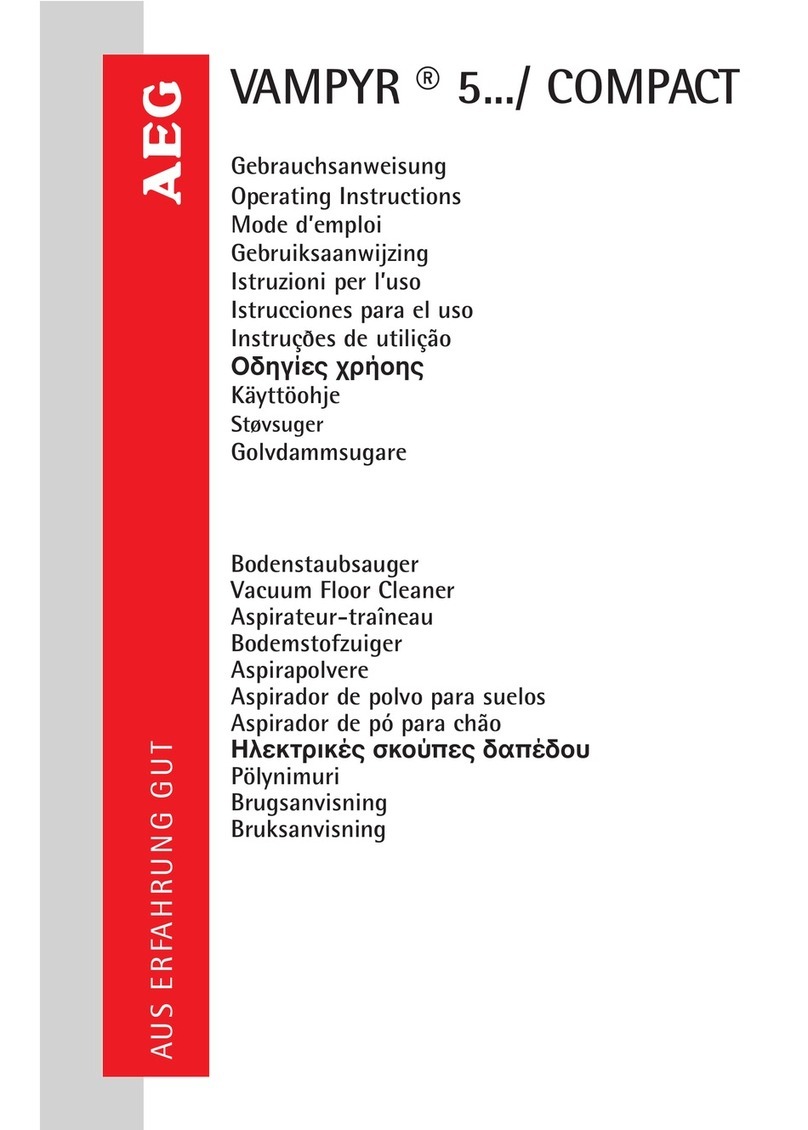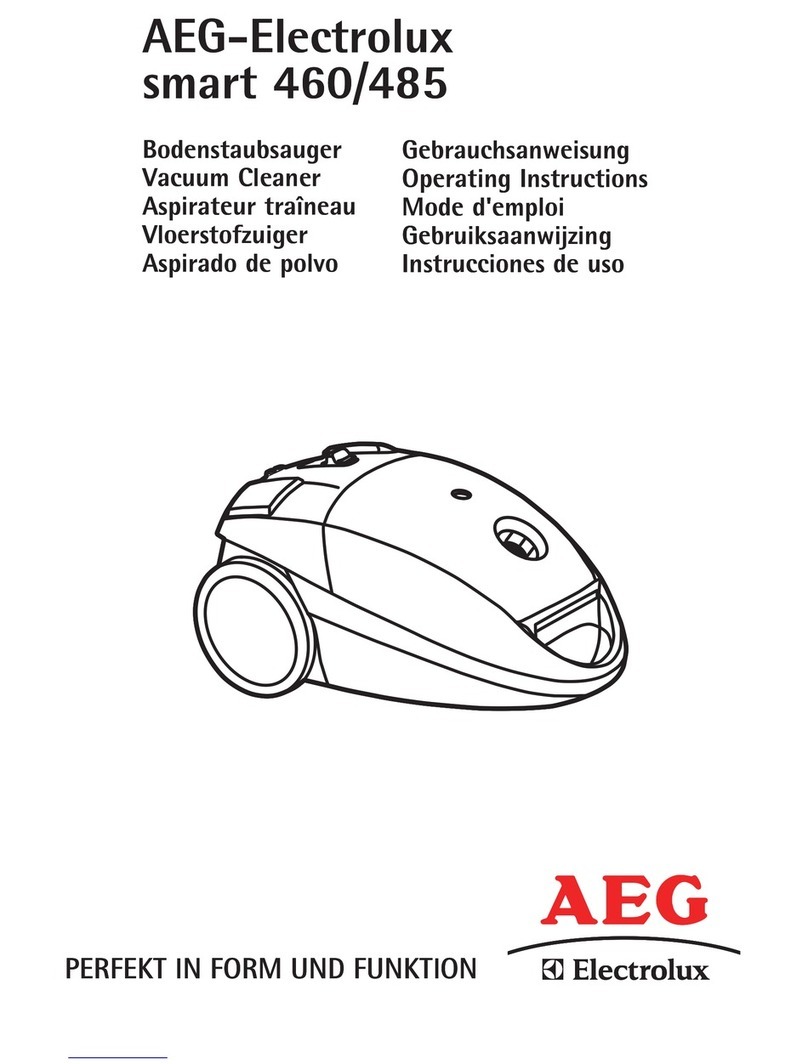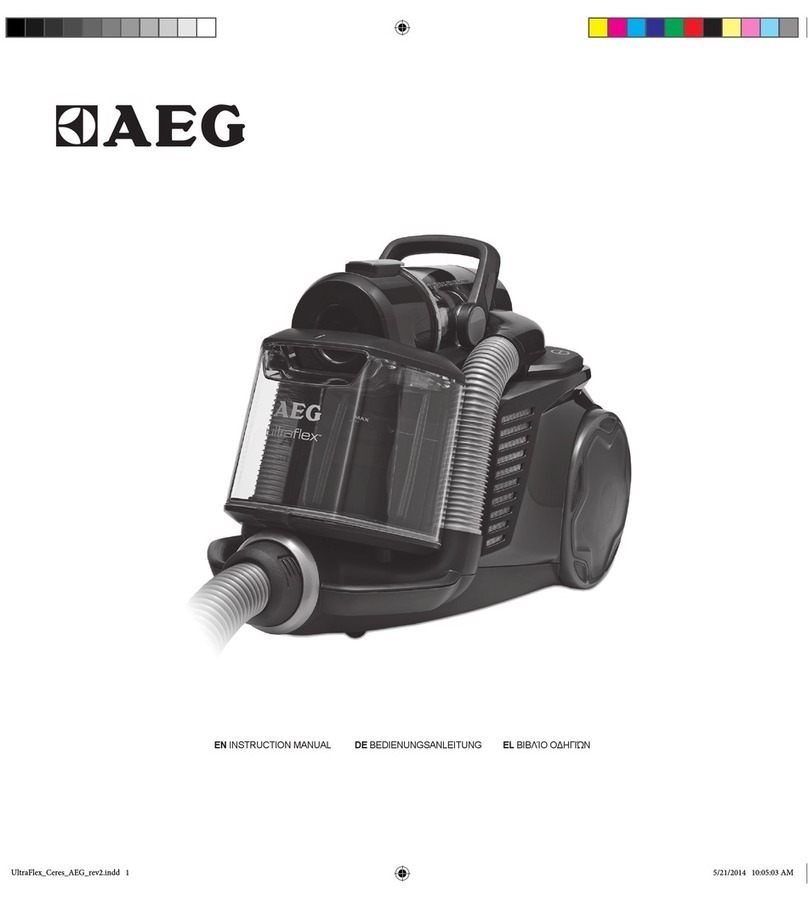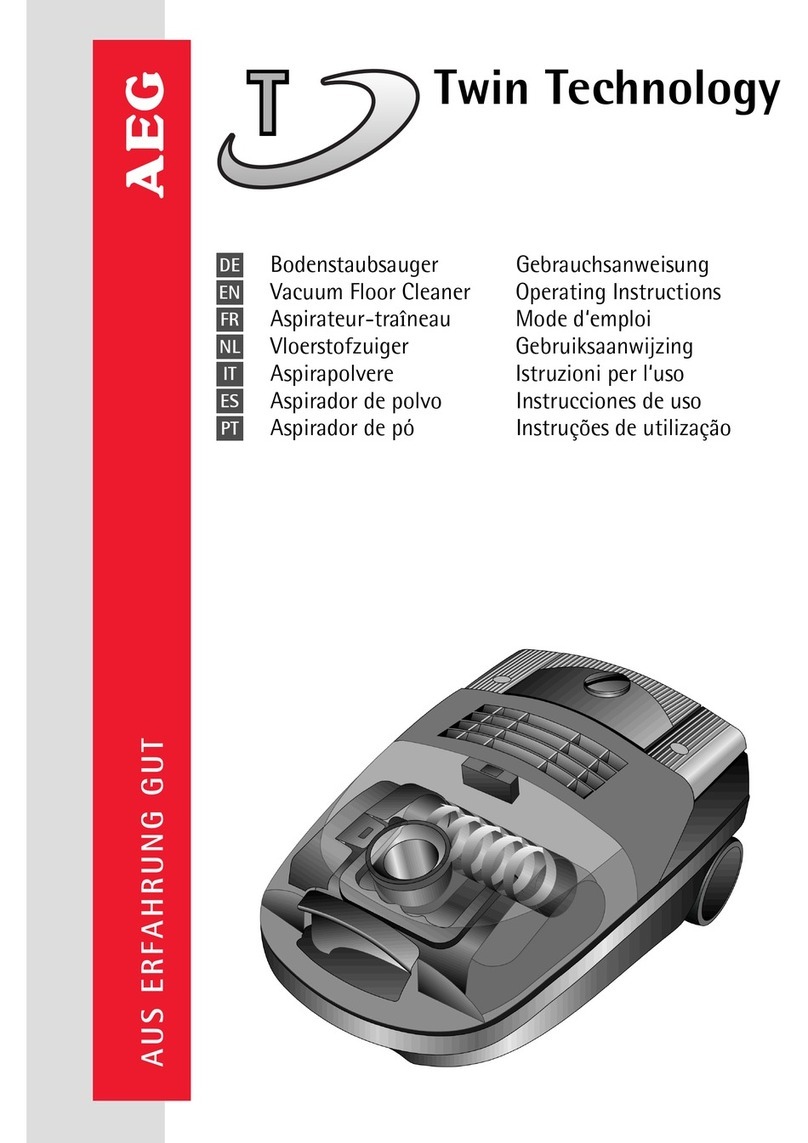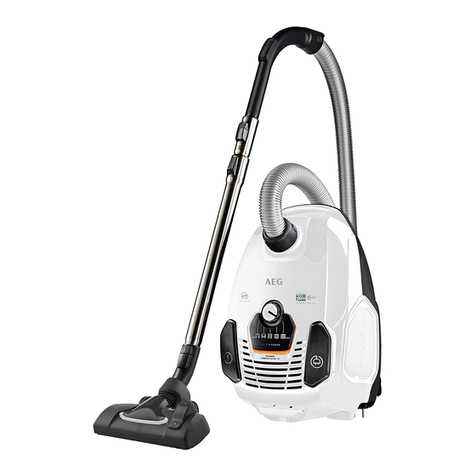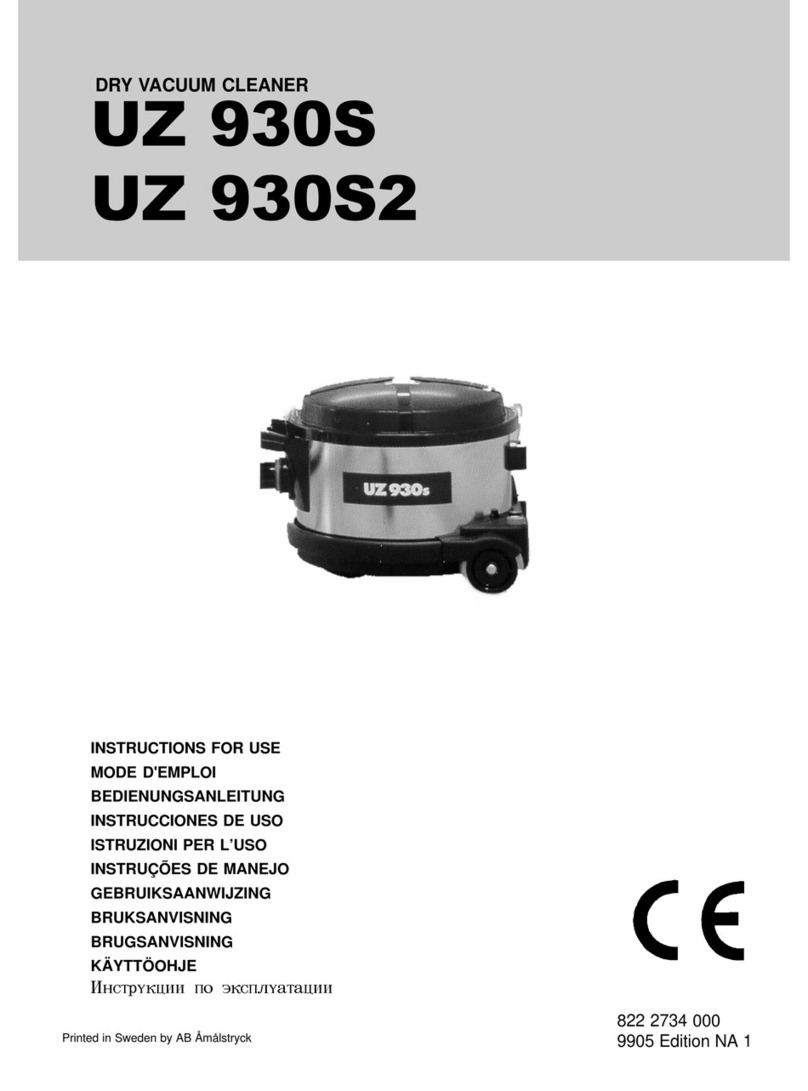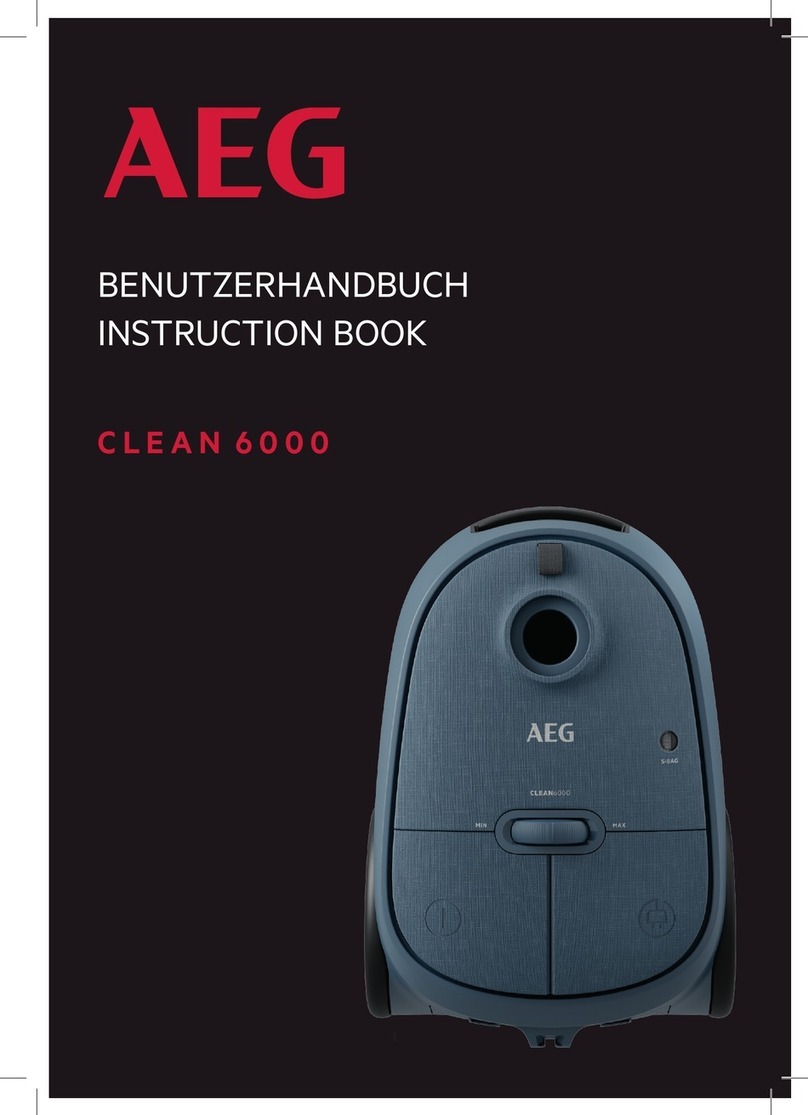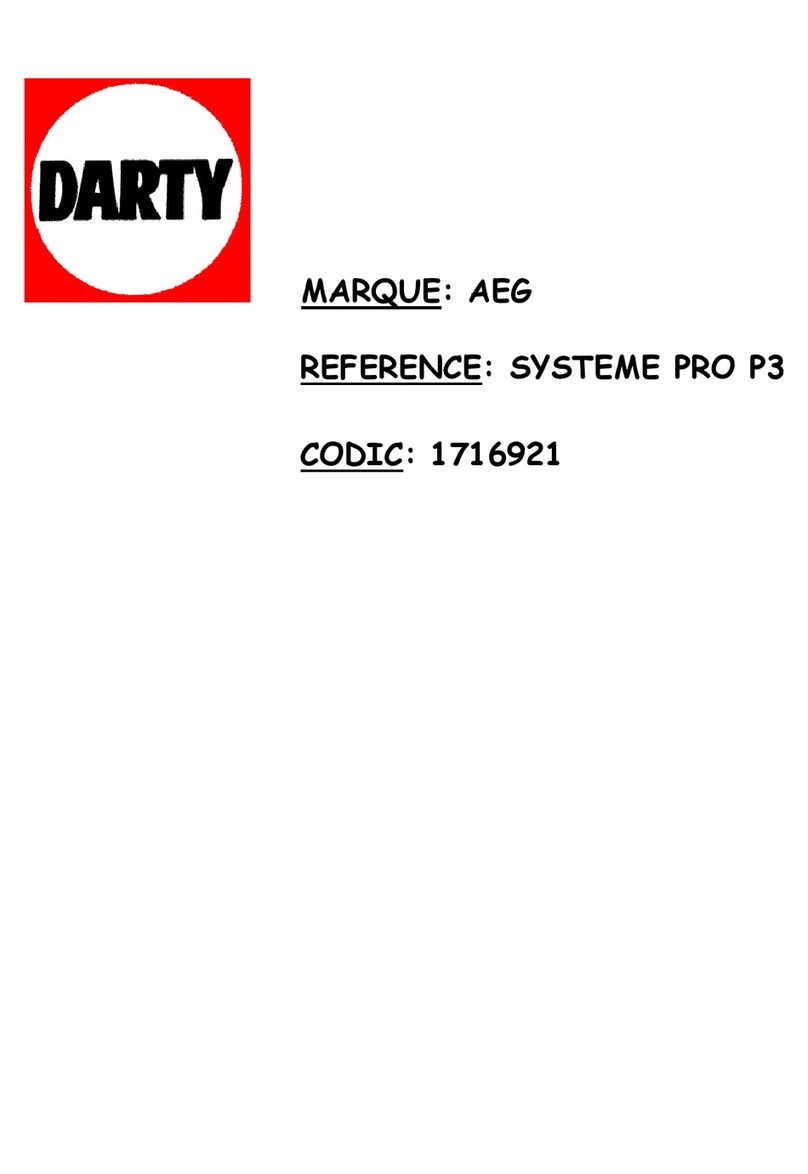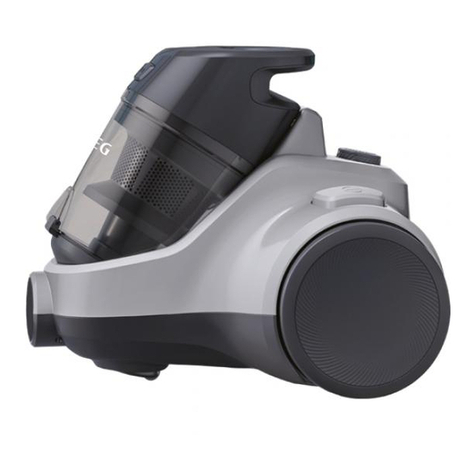
6
6
BATTERY AND CHARGER
Compatible battery pack
(not included)
Compatible charger
(not included)
L1815R
L1820R
L1825R
L1830R-X5
L1840R
L1850R
L1860R
L1860R-X5
L1890R
AL18G
AL1218G
BL1218
BLK1218
BL18DP-X5
BL18DP2-X5
BL18DPS
Use AEG 18V battery and charger only
WARNING! Read all safety warnings, instructions, illustrations and
specifications provided with this power tool. Failure to follow all instructions
listed below may result in electric shock, fire and/or serious injury. Save all
warnings and instructions for future reference.
HANDHELD DUST EXTRACTOR SAFETY WARNINGS
Do not allow children to operate the product or play with the product as a toy.
Close attention is necessary when used near children.
The product is intended for household use only.
Use the product only for its intended use as described in this manual.
The product is designed solely for use in the private sector and for the
designated purpose. The product is not suitable for commercial use. Do not use
the product outdoors (unless it has been specifically designed for use outdoors).
Do not subject the product to heat, direct sunshine or very high moisture (e.g.,
rain).
Do not let familiarity gained from frequent use of tools allow you to become
complacent and ignore tool safety principles. A careless action can cause severe
injury within a fraction of a second.
Keep handles and grasping surfaces dry, clean and free from oil and grease.
Slippery handles and grasping surfaces do not allow for safe handling and
control of the tool in unexpected situations.
If the product is not working properly, has been dropped, damaged, left outdoors
or dropped into water, return to your nearest service centre.
Do not handle charger or the product with wet hands.
Do not put any objects in ventilation openings. Do not use the product with any
opening blocked. Keep openings free of dust, lint, hair and anything that may
reduce air flow.
Never vacuum materials such as hot coals, cigarette butts, matches, etc.
Do not use the product without debris tank or filter in place.
Use extra care when using the product on stairs.
Do not use the product to pick up hard objects such as nails, screws, coins, etc.
Damage or injury could result.
Remove battery when the product is not in use and before servicing.
Do not place the product near fire or heat. They may explode.
The product should be charged in a location where the temperature is more than
10°C but less than 38°C.
Under extreme usage or temperature conditions, battery leakage may occur. If
liquid comes in contact with skin, wash at least 10 minutes then seek immediate
medical attention.
Batteries vent hydrogen gas and can explode in the presence of a source of
ignition, such as a pilot light. To reduce the risk of serious personal injury, never
use any cordless product in the presence of an open flame. An exploded battery
can propel debris and chemicals. If exposed, flush with water immediately.
Electric shock could occur if the battery is charged outdoors or on wet surfaces.
Save these instructions. Refer to them frequently and use them to instruct others
who may use this tool. If you loan someone this tool, loan them these instructions
also.
BATTERY AND CHARGER SAFETY
Recharge only with the charger specified by the manufacturer. A charger that
is suitable for one type of battery pack may create a risk of fire when used with
another battery pack.
Use power tools only with specifically designated battery packs. Use of any other
battery packs may create a risk of injury and fire.
When battery pack is not in use, keep it away from other metal objects, like
paper clips, coins, keys, nails, screws or other small metal objects, that can
make a connection from one terminal to another. Shorting the battery terminals
together may cause burns or a fire.
Under abusive conditions, liquid may be ejected from the battery; avoid contact.
If contact accidentally occurs, flush with water. If liquid contacts eyes, additionally
seek medical help. Liquid ejected from the battery may cause irritation or burns.
Do not use a battery pack or tool that is damaged or modified. Damaged or
modified batteries may exhibit unpredictable behaviour resulting in fire,
explosion or risk of injury.
Do not expose a battery pack or tool to fire or excessive temperature. Exposure
to fire or temperature above 130 °C may cause explosion.
Follow all charging instructions and do not charge the battery pack or tool
outside the temperature range specified in the instructions. Charging improperly
or at temperatures outside the specified range may damage the battery and
increase the risk of fire.
Do not expose charger to wet or damp conditions.
Do not place batteries near fire or heat. They may explode.
Use of an attachment not recommended or sold by the battery charger
manufacturer may result in a risk of fire, electric shock, or injuries to person.
To reduce risk of damage to charger body and cord, pull by charger plug rather
than cord when disconnecting charger.
Make sure cord is located so that it will not be stepped on, tripped over, or
otherwise subjected to damage and stress.
An extension cord should not be used unless absolutely necessary. Use
of improper extension cord could result in a risk of fire and electric shock. If
extension cord must be used, make sure:
a. That pins on plug of extension cord are the same number, size and
shape as those of plug on charger.
b. That extension cord is properly wired and in good electrical
TECHNICAL DATA 18V HANDHELD DUST EXTRACTOR BHSS18
Rated voltage 18 V
Air flow volume 1068 L/min
Air watt 19AW
Dust storage capacity 670ml
Suction 5.4 KPa*
Weight - not including battery pack 0.98 kg
*Average over 2mins with full charge 18V battery
